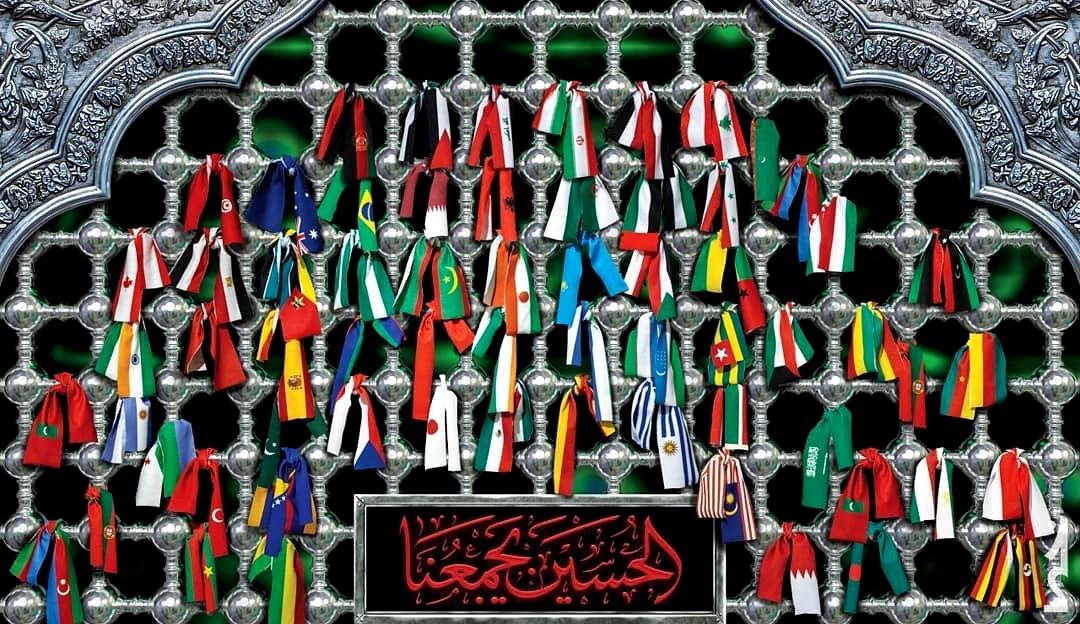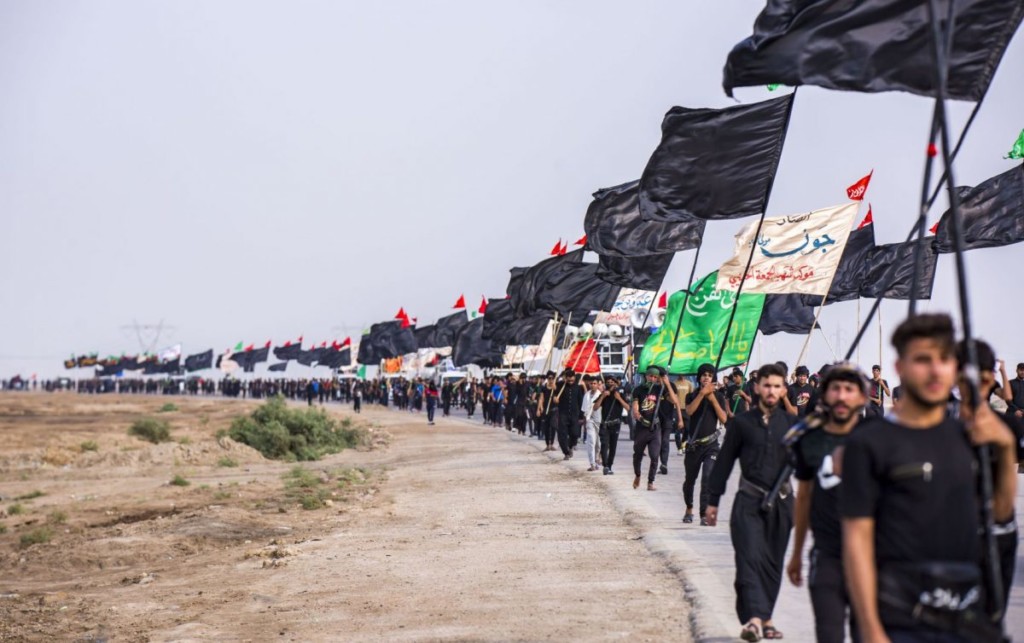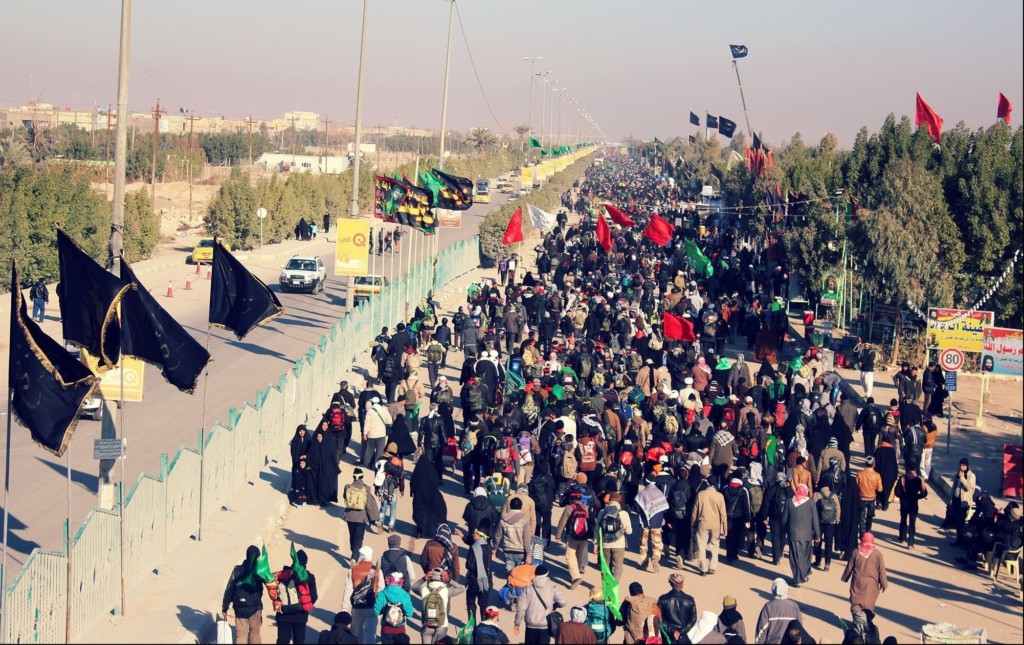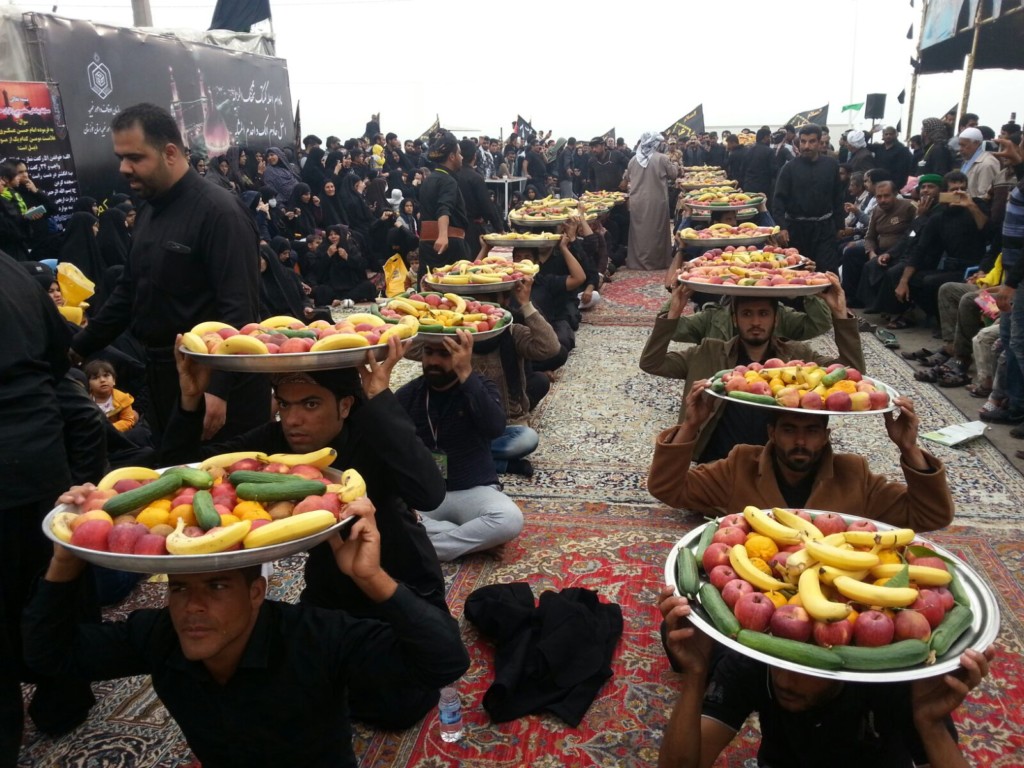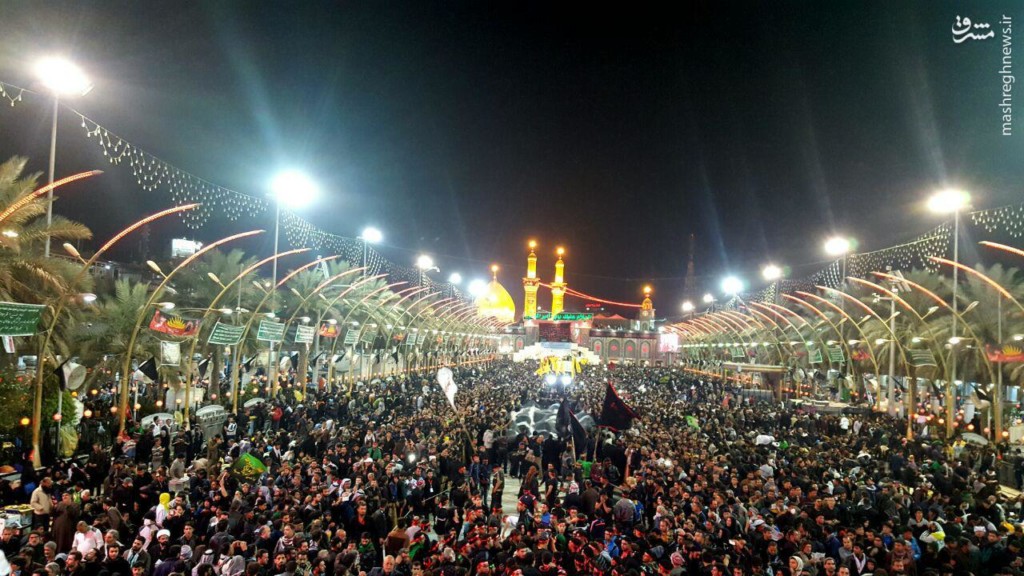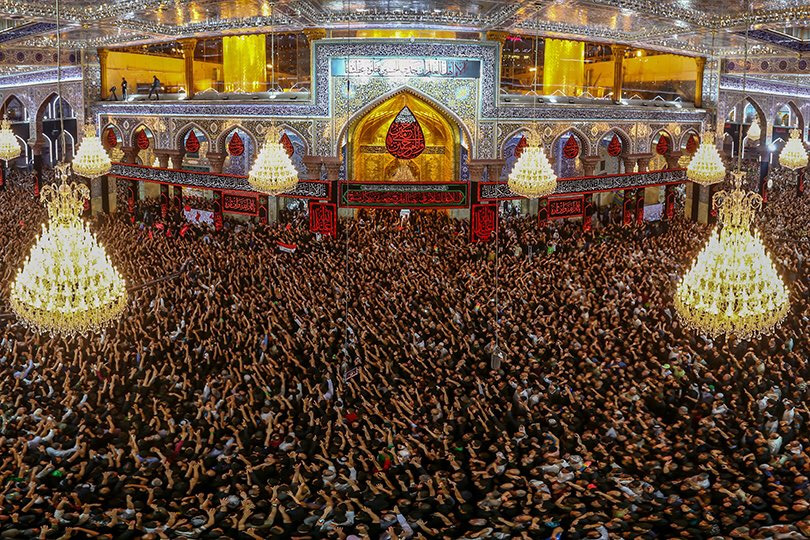Arbaeen (اربعین) means the 40th or 40. In Islamic culture and mystical teachings, the number 40 holds a special place. Performing an act of worship for 40 days or devoting oneself to worship for that number of days is common for attaining one’s desires or achieving mystical stations.
In the Ashura culture, Arbaeen is the 40th day of the martyrdom of the 3rd Shiʿite Imam, Imam al-Husain (peace be upon him) and falls on the 20th of the month of Safar (the second month of the Islamic lunar calendar). Imam Husain was martyred on the day of Ashura, i.e. the 10th of Muharram, in the year 61 AH.
In folk tradition, the 40th day of a dear one’s passing is commemorated by holding a memorial gathering for them. On the 20th of Safar, the Shiʿas also hold mourning ceremonies in different cities and countries and uphold and pay homage to Imam Husain and Arbaeen, both of which are religious symbols. In the city of Karbala, the Arbaeen or 40th of Imam Husain (pbuh) holds a special grandeur. From the distant past up until today, whenever the Shiʿas were able to, they would travel to Karbala on Arbaeen and visit Imam Husain’s shrine with a special enthusiasm and passion. In recent years too, millions of heartbroken lovers of the Imam travel to Karbala on Arbaeen in what is the biggest congregation and convention of Shiʿas in the world and pay homage to the martyrs of Karbala.
In a narration from the 11th Shiʿite Imam, Imam Hasan al-Askari (pbuh), he states that one of the signs of a believer is to visit Imam Husain on the day of Arbaeen.
Now the question that arises is why such a pilgrimage is so important and advised? Particularly since such a pilgrimage or even commemoration has not been recommended for any of the other Infallibles (peace be upon them)!
The great scholar, Abu Reyhan Biruni, says: On the 20th of Safar, the severed head of Imam Husain (pbuh) was returned to his body and buried with it and it is on this very day that the pilgrimage of Arbaeen has been recommended. Allamah Majlisi also states in Zād al-Maʿād: It is well known that the reason for the emphasis of pilgrimage on this day is because Imam Zainul Abideen (pbuh) arrived in Karbala after leaving Damascus and returned the severed heads of the martyred to their bodies. Imam Zainul Abideen is the 4th Shiʿite Imam and the son of Imam Husain who was imprisoned after the event of Ashura. The prisoners, who included the family and close relatives of Imam Husain (pbuh) like his respected sister, Lady Zainab (pbuh), were taken to Damascus from Karbala. The severed heads of the martyrs of Karbala also accompanied the prisoners on spears till Damascus while their headless bodies were left in Karbala.
Therefore, it seems that which distinguishes the pilgrimage and homage to Imam Husain (pbuh) on the day of Arbaeen from all other times is the rejoining of the heads to the bodies of the martyrs and the visit to their graves by Imam Zainul Abideen and his accompanying caravan of Imam Husain’s family members. Similarly, the Arbaeen of Imam Husain (pbuh) is an opportunity for the retelling of the message of Karbala and that which humanity must always remember regarding not submitting to oppression and the oppressor.
Sources:
Davudi, S., & Rustamnejhad, M. (1387 AP). Ashura: Rīshe-ha, Angīze-ha, Ruidād-ha va Payāmad-ha [Ashura: roots, causes, events and consequences]. Under the guidance of Ayatollah Makarem Shirazi. Imam Ali b. Abi Taleb Publications. P. 784.
Muhaddithi, J. (1385 AP). Farhang-i Ashura [the culture of Ashura]. Maruf Publications. P. 544.
Nazari Munfared, A. (1390 AP). Tārīkh-i Islam; Vāqiʿe-yi Karbala [history of Islam: the event of Ashura]. Jilve-yi Kamal Publications. P. 685.
Compiler: R. Barati
Translator: Rashed
Some Pre_pandemic Moments of Arbaeen Walk


